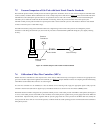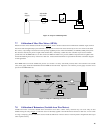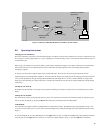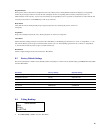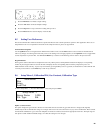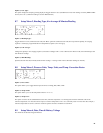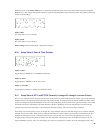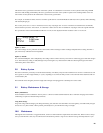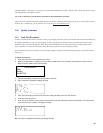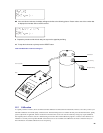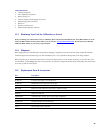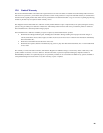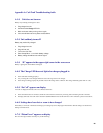
23
will alter the factory-specified low-end flow of that flow cylinder. To calculate the low-end flow of a flow cylinder while using a PTVM
other than 1.000, multiply the PTVM by the factory-specified low-end flow of the cylinder in question. The resulting number is the new
low-end flow of that cylinder at the manufacturer’s rated accuracy specification.
For example, to calculate the effect on the low-end flow specification of a Cal=Trak Model SL-800-10 (low flow cylinder) while calibrating
with actual hydrogen gas:
The viscosity of N
2
at 0° C is 165.31 microPoise. The viscosity of hydrogen at 0° C is 83.21 microPoise. To determine the new PTVM,
these should be expressed as 165.31/83.21, or 1.988. Enter 1.988 as the new LCF for calibration of hydrogen. Since the original minimum
flow specification of the Cal=Trak Model SL-800-10 is 5 sccm, the new adjusted minimum would be 1.988 * 5 = 9.94 sccm.
Option 1, "PTV"
This is the Leakage rate of a particular cell. It is factored into all flow readings to obtain a leakage-independent flow reading. The PTV is
part of the factory calibration and non-adjustable.
Option 2, "PTVM"
This is the PTV Multiplier, and is multiplied by the Leakage value to enhance accuracy at lower flows when using gases other than nitrogen
or air. The LCF factory setting is 1.000, although it may be changed to any value between 0.200 and 3.00 using the keypad. For further
information, please contact Sierra.
9.0 Battery System
The Sierra Cal=Trak is powered by an internal lead-acid battery. The battery will power the instrument for 6–8 hours of continuous use and
has a typical service life of approximately 2–4 years, depending on use. The Cal=Trak provides a convenient 65-minute automatic shut-off
to extend battery life.
The Cal=Trak can be charged by the Sierra single station charger when plugged into a standard power source outlet.
9.1 Battery Maintenance & Storage
Battery Maintenance
Lead-acid batteries will not exhibit the “memory effect’’ common to nickel-cadmium batteries due to continuous charging and no further
conditioning is required to maintain full performance.
Long-Term Storage
Long-term storage without charging can damage the battery pack, therefore if the Cal=Trak is not used regularly, it should be fully charged
at least once every three months. When possible, periodically leave your Cal=Trak on charge overnight.
10.0 Maintenance
Although the Sierra Cal=Trak is a rugged instrument, certain care and maintenance requirements must still be met. When not in use always
store your Cal=Trak in a clean, dry environment. Sierra Instruments provides a range of cases ideal for storage and transportation of your
Setup Menu
–
6
PTV 0.460 ccm
PTVM 1.000



